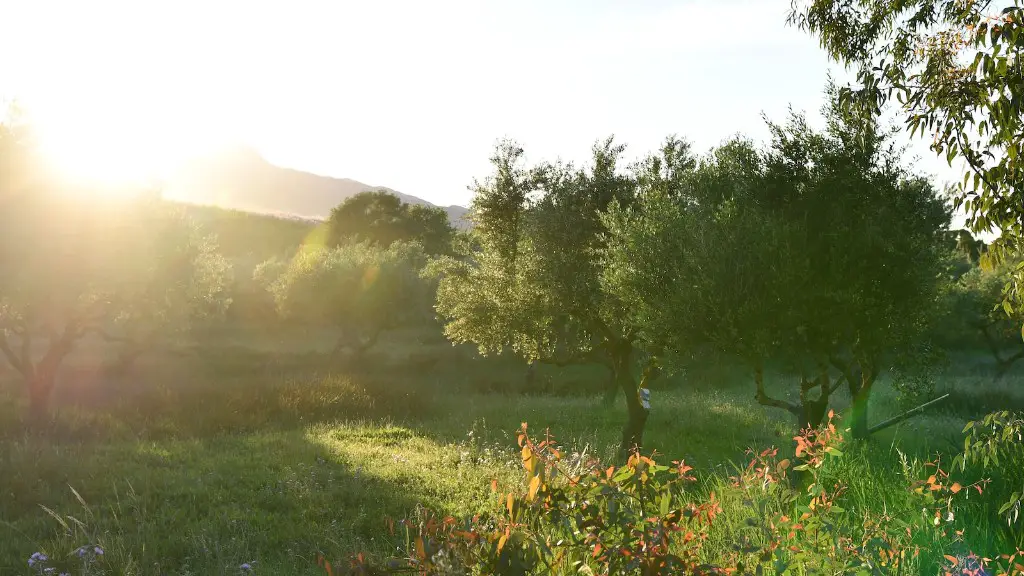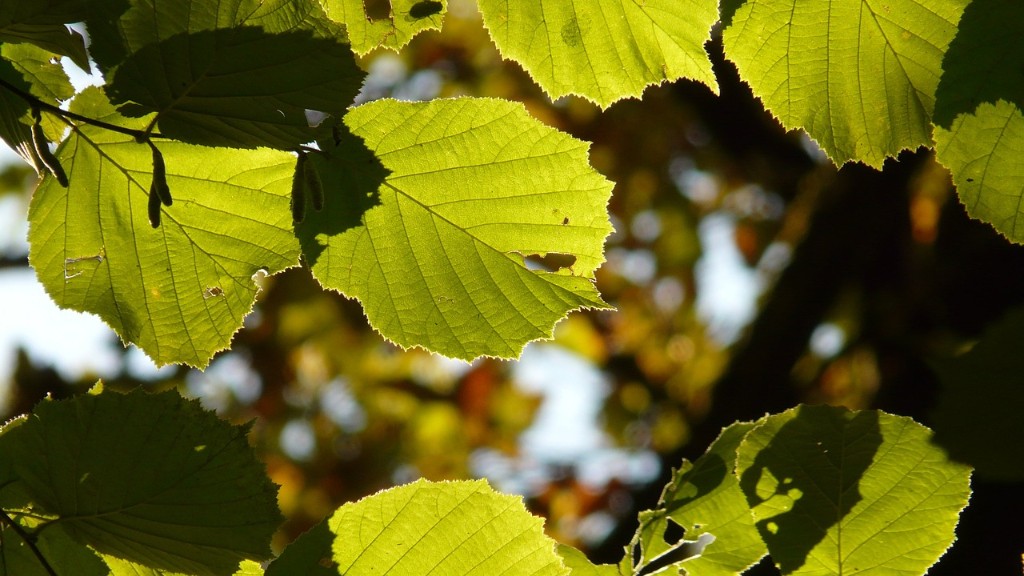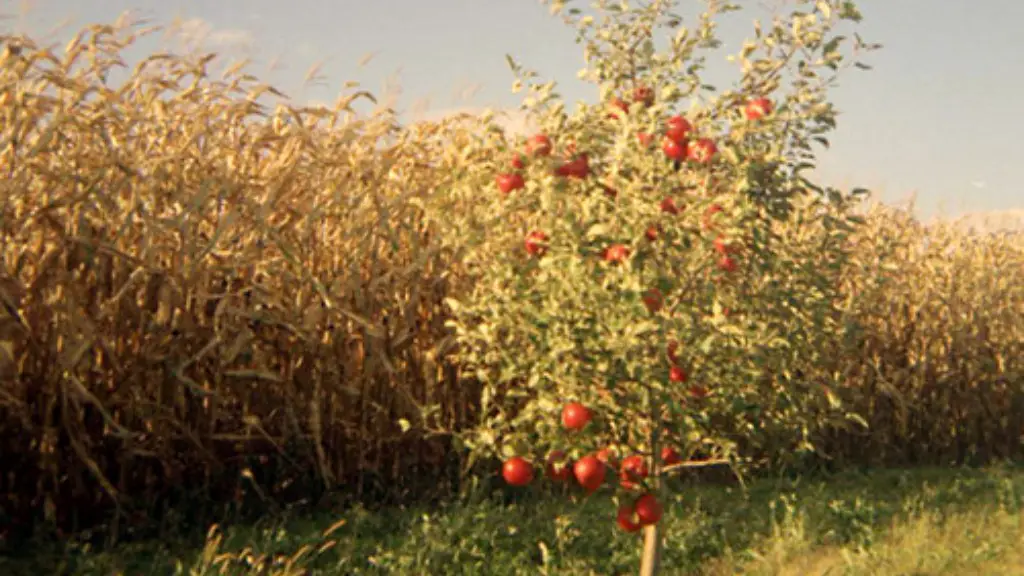Meyer lemon trees are a popular citrus tree that can be grown indoors in a pot. If you’re wondering what size pot should you choose for your meyer lemon tree, you’ve come to the right place! The size of pot will depend on the age and size of the tree, as well as how quickly it is expected to grow. To ensure your tree has plenty of space as it grows and is able to put down enough roots to anchor itself, you’ll need to choose the correct size of pot.
When selecting a pot for a meyer lemon tree, the size of the root ball will be the deciding factor. Inspect the root ball carefully and choose a pot that is 1 ½ to 2 times larger than the root ball. If you have a young tree, choose a pot with a diameter of 12 inches or greater. This should be large enough for the tree to grow for a few years, depending on the growth rate. It’s important to note that an undersized pot may constrict the root system or stunt the tree’s growth.
To avoid having to shift up pot sizes too frequently, you can opt for a larger pot right away. If you choose a larger pot such as 15 inches or wider, this gives the tree enough room to establish a deep root system and should be sufficient for the tree’s mature size. It is also important to make sure the pot has drainage holes to allow away excess water.
A rule of thumb is to ensure that your pot should be wide enough, but not so deep that the root ball is sitting too low. In general, no more than one-third of the tree’s root ball should be below the soil line. Pots usually come in a variety of shapes and heights, so you may be able to choose one that fits the tree’s size perfectly.
It is also worthwhile investing in good quality pots. Clay and terracotta pots will be more expensive upfront, but they are more likely to survive outdoors and last for several years, which can save you money in the long run. Lastly, remember to position the pot where it will get light morning sun and afternoon shade to prevent scorch from direct sun.
Root System
Meyer lemons are fast-growing trees, so it is important to ensure the pot you choose can accommodate a large root system. The best way to ensure that the pot you select will allow the tree’s root system to spread properly is to select a slightly larger pot than needed initially. This will give the tree enough room to spread its roots while still providing enough support to keep the tree steady during its growth.
Once you’ve selected a pot that’s appropriately sized, you can start preparing for the tree’s first planting. Before placing the tree in the pot, you should make sure the soil is moist, which will help improve the drainage and make sure there are no air pockets in the root system. It is important to break through any air pockets to ensure proper rooting of the tree.
When planting the tree, it is best to plant it a bit lower than the surface to ensure proper drainage and to help prevent water from stagnating around the tree roots. This is especially important for Meyer lemons, as they are prone to root rot if the soil is too damp.
If you find your tree has outgrown its initial pot, you can size up. It is important to ensure that the pot is wide enough to accommodate a large root system. This will help your lemon tree root properly and sustain its growth.
If you find that the root ball has become root-bound, it is best to loosen it before replanting. Gently loosen the roots and prune the root system if necessary. This will ensure the tree is able to establish itself properly in the new pot.
Soil Type
In choosing a pot for your Meyer lemon tree, it is equally important to choose the right type of soil. Soil for most citrus trees is composed of equal parts sand, loam, and peat moss. These components provide perfect drainage and aeration as well as the nutrients for the tree’s growth.
If you are planting your lemon tree in soil outdoors, it is best to use a soil mix that contains plenty of organic matter, as this helps promote healthy plant growth. Before planting, remember to adjust the pH, since Meyer lemons prefer slightly acidic soil, slightly below 6.5.
It is also important to ensure that the pot you choose is able to handle the soil as it can become heavy or stick to the sides when wet. If your pot will be exposed to outdoor temperatures, opt for a clay or terracottapot to help regulate temperature.
Whatever pot you choose for your tree, good soil is essential for your Meyer lemon tree’s health. Ensure that the soil contains the right combination of drainage, aeration and organic matter to help maintain the optimal pH and water levels so your tree can deliver a healthy crop of citrus fruits.
Fertilizer
When caring for a Meyer lemon tree, it is important to fertilize it periodically. Fertilizing helps promote healthy growth and encourages better yields. Depending on the season, look for a fertilizer comprised of nitrogen, phosphorus and potassium. If the leaves start to yellow, it may be a sign that additional fertilizing is needed.
Most fertilizers come as granules which you will sprinkle over the soil and mix in gently. Alternatively, you can opt for liquid fertilizer, which can be more convenient and easier to administer. And when potting up a new tree, opt for a slow-release fertilizer for the first few years, which can help promote steady growth.
It is also important to remember not to over-fertilize as too much fertilizer can do more harm than good to your tree. Increasing nitrogen levels in the soil can lead to reduced yields and can also encourage diseases. If your fertilizer does not contain trace minerals, you may wish to consider supplementing these regularly to help your tree remain healthy.
With the right pot size, soil type and frequent fertilizing, you should be able to enjoy a bumper crop of Meyer lemons.
Watering
Watering is one of the most important aspects of caring for a Meyer lemon tree. It is best to let the top soil dry out between waterings, and then water slowly and deeply to ensure proper soil saturation. To avoid root rot, it is also important to avoid over-watering.
In order to determine how much watering is required, it is best to check the soil before each watering session. If the topsoil is dry, it is time to water. Additionally, be sure to position the pot in a sunny location where it can get some morning sun and afternoon shade. This will help create the proper balance of warmth and sunlight for your tree.
Lastly, to get the most out of your tree, be sure to provide your Meyer lemon with a humid environment. One easy way of doing this is to mist the tree once or twice a week with a spray bottle. This will be especially helpful in dry climates where humidity levels are naturally low.
Meeting these basic requirements and utilizing the right pot size and soil type, you should be able to enjoy a bountiful harvest of Meyer lemons.




